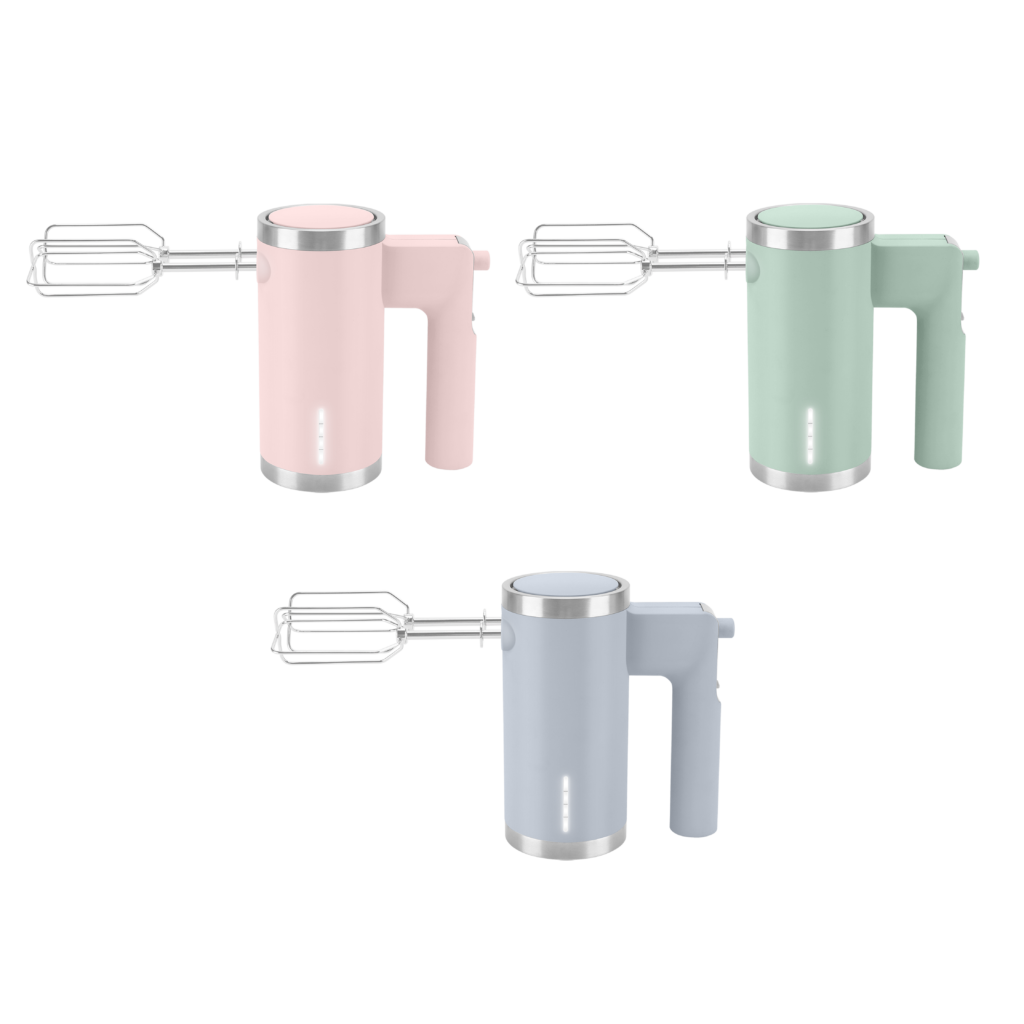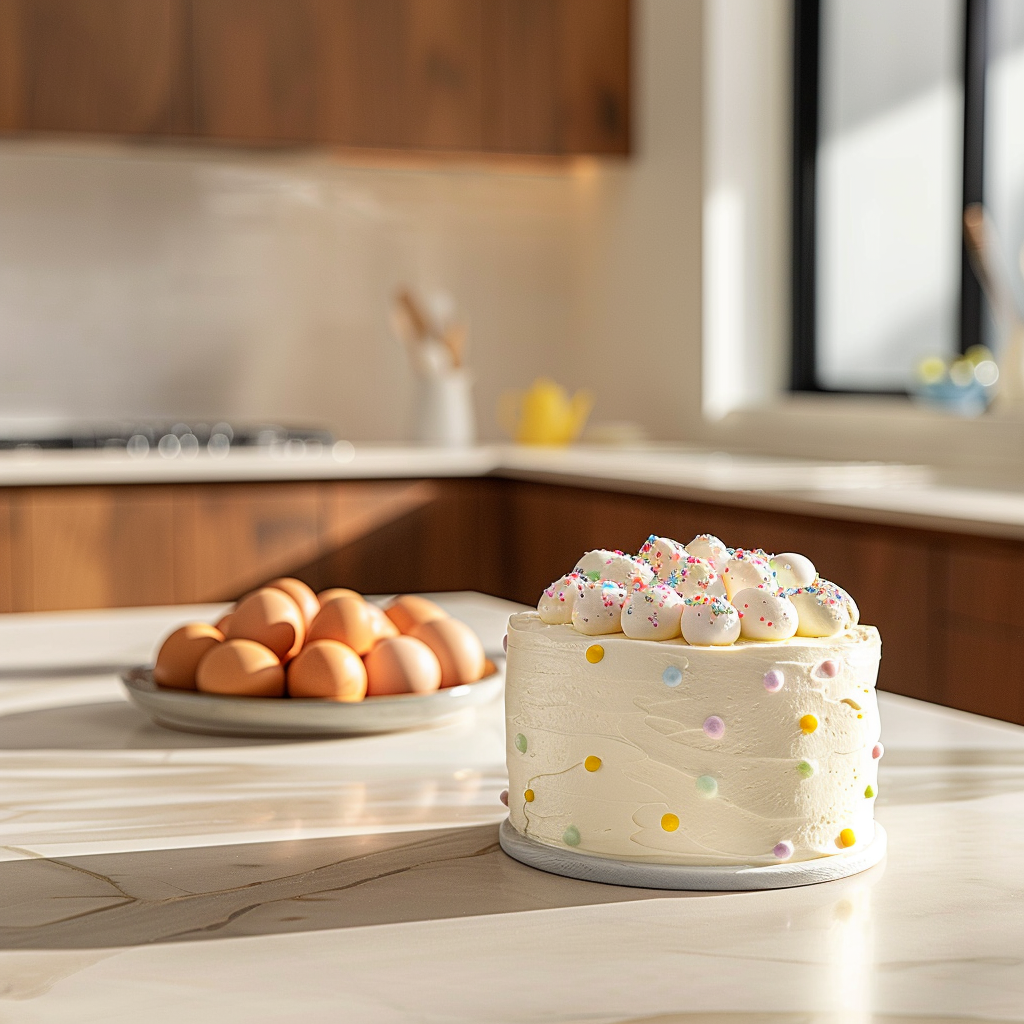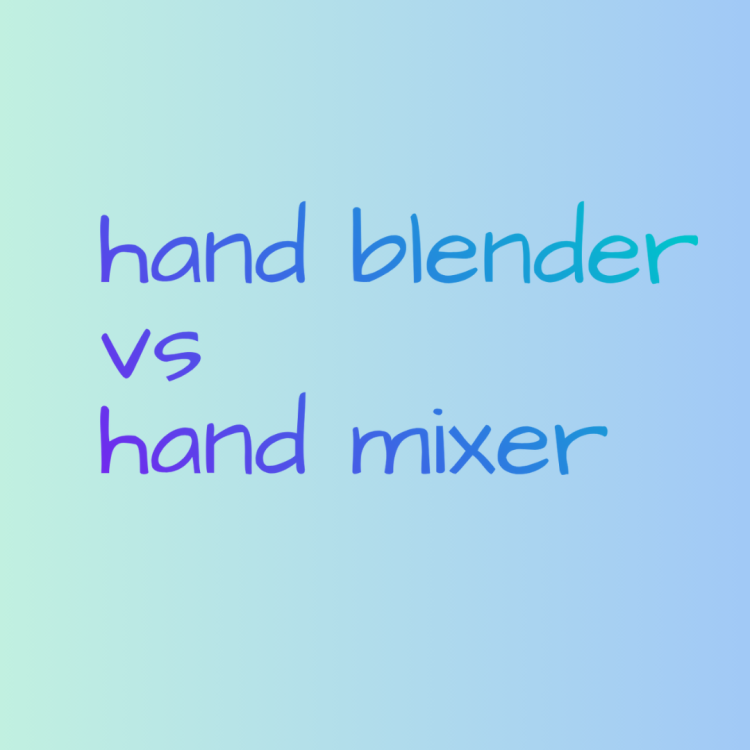
The question of whether a hand mixer is better than a hand blender depends largely on the tasks you need to perform in the kitchen. Both appliances have their own unique strengths, and each excels in different areas. Understanding these differences will help you determine which tool is better suited to your specific cooking or baking needs.
Hand Mixer Overview:
- Purpose: A hand mixer is primarily used for mixing, whipping, and beating ingredients. It is commonly employed in baking to mix cake batter, whip cream, and beat eggs.
- Design: Hand mixers usually have two beaters that rotate to incorporate air into the mixture, which is essential for creating light and fluffy textures.
- Best For: Hand mixers are best for tasks that require gentle mixing, such as making whipped cream, meringues, or pancake batter.
Hand Blender Overview:
- Purpose: A hand blender, also known as an immersion blender, is designed for blending and pureeing. It is ideal for making smoothies, soups, sauces, and pureeing vegetables.
- Design: Hand blenders have a single blade at the end of a long shaft, which can be submerged directly into pots, bowls, or cups to blend ingredients.
- Best For: Hand blenders excel at tasks that require thorough blending or pureeing, such as making creamy soups, smoothies, or baby food.
Which is Better?
- Versatility: A hand blender is generally more versatile because it can be used for a wide range of tasks, from blending hot soups directly in the pot to making smoothies and sauces. However, if your primary focus is on baking, a hand mixer might be better suited to your needs.
- Texture Control: For baking tasks that require precise control over texture, such as whipping cream to stiff peaks or beating eggs to a specific consistency, a hand mixer is superior. On the other hand, for smooth purees and blended mixtures, a hand blender is the better option.
In conclusion, whether a hand mixer or a hand blender is better depends on your specific kitchen needs. If you often make soups, smoothies, or sauces, a hand blender is a better choice. If you primarily bake and need to whip, beat, or mix ingredients, a hand mixer would be more beneficial.

Can a Hand Mixer Replace a Blender?
While a hand mixer and a blender share some overlapping functions, a hand mixer cannot fully replace a blender. Each appliance is designed for specific tasks, and trying to use one in place of the other can lead to suboptimal results.
What a Hand Mixer Can and Can’t Do:
- Mixing and Whipping: A hand mixer is excellent for mixing cake batter, whipping cream, and beating eggs. These tasks require aeration and gentle mixing, which the beaters on a hand mixer are designed to do effectively.
- Blending and Pureeing: A hand mixer struggles with tasks that require blending or pureeing. For instance, it cannot effectively make smoothies, puree soups, or crush ice. The beaters of a hand mixer are not designed to chop or blend solid ingredients into a smooth consistency.
What a Blender Can Do:
- Blending: A blender, particularly a hand blender, is ideal for making smooth, creamy mixtures. It can handle everything from pureeing vegetables to making smoothies and even crushing ice in some cases.
- Chopping: Some blenders come with attachments that allow them to chop or grind ingredients, which is something a hand mixer cannot do.
Why They’re Not Interchangeable:
- Motor Power and Design: Blenders typically have more powerful motors designed to crush and blend hard ingredients. A hand mixer, with its beaters, is designed for aeration rather than pureeing. This makes a blender more suitable for liquid-based tasks, while a hand mixer is better for aerating and mixing.
In summary, while a hand mixer can perform some of the functions of a blender, such as mixing light ingredients, it cannot fully replace a blender, especially for tasks that require thorough blending or pureeing.

Which is Better: Mixer or Blender?
Choosing between a mixer and a blender depends on what you most often prepare in the kitchen. Each appliance serves different purposes and excels in different areas.
When a Mixer is Better:
- Baking: A mixer, particularly a stand or hand mixer, is indispensable for baking. It excels at mixing ingredients to the right consistency, whipping cream, and beating eggs. If you bake frequently, a mixer is essential for achieving the right textures in your recipes.
- Creamy Textures: For making whipped cream, meringue, or other airy and light mixtures, a mixer is superior due to its ability to incorporate air into the mixture.
When a Blender is Better:
- Blending and Pureeing: A blender is better for liquid-based tasks. It is perfect for making smoothies, pureeing soups, or blending sauces. The powerful blades of a blender can break down solid ingredients into a smooth consistency, something a mixer cannot do.
- Versatility: Blenders are more versatile in that they can handle a variety of tasks, from making smoothies to crushing ice, depending on the model. If your cooking involves a lot of liquid ingredients, a blender would be the better choice.
Final Verdict:
- Task-Specific Choice: If you focus on baking, a mixer is better. If you need to blend, puree, or make smooth mixtures, a blender is the right choice.
- Combination: For a well-rounded kitchen, having both a mixer and a blender allows you to tackle a wider range of recipes and cooking techniques.

What Are the Disadvantages of a Hand Mixer?
While a hand mixer is a versatile and useful kitchen tool, it does come with certain disadvantages that may limit its functionality in specific situations.
Disadvantages of a Hand Mixer:
- Limited Power: Hand mixers generally have less power compared to stand mixers or blenders. This means they can struggle with heavier doughs or thick mixtures, potentially overworking the motor.
- Messy Splattering: Because hand mixers require the user to hold the appliance while it mixes, there is a higher chance of splattering, especially when working with liquids or loose ingredients. This can make the kitchen messier and harder to clean up afterward.
- Less Stability: Without the stability of a stand, a hand mixer relies entirely on the user’s grip, which can lead to uneven mixing if the user’s hand isn’t steady. This can be especially challenging during prolonged mixing tasks.
- Tiring to Use: For tasks that require extended periods of mixing, using a hand mixer can be tiring. The weight of the mixer, combined with the need to hold it steady, can make it uncomfortable to use for longer durations.
- Limited Attachments: Hand mixers typically come with fewer attachments than stand mixers. While they may include beaters and dough hooks, they lack the variety of attachments available for stand mixers, such as pasta makers or meat grinders.
Despite these disadvantages, hand mixers are still highly valued for their portability, ease of use, and convenience in handling lighter mixing tasks.
Is It Better to Mix by Hand or Mixer?
The decision to mix by hand or use a mixer depends on several factors, including the type of recipe, the desired consistency, and personal preference.
When Mixing by Hand is Better:
- Control: Mixing by hand gives you more control over the process. You can adjust the speed, intensity, and duration of mixing based on how the mixture looks and feels. This is particularly useful for delicate tasks, such as folding in whipped cream or mixing a batter that needs to retain air.
- No Equipment Required: Mixing by hand requires no special equipment, making it accessible to everyone. It’s ideal for simple tasks like stirring sauces, mixing dressings, or combining ingredients in a small batch.
- Less Air Incorporation: In some recipes, such as making a dense batter or dough, it’s beneficial to incorporate less air. Mixing by hand allows you to achieve this without overworking the mixture.
When Using a Mixer is Better:
- Efficiency: A mixer, whether hand or stand, is much faster and more efficient than mixing by hand. It’s especially useful for tasks that require a lot of mixing or vigorous beating, such as making whipped cream, meringues, or bread dough.
- Consistency: Mixers provide more consistent results, particularly when it comes to whipping or beating. They can achieve a smooth, even texture more easily than mixing by hand, which can sometimes leave lumps or unevenly mixed ingredients.
- Less Physical Effort: Using a mixer reduces the physical effort required, making it ideal for people who may find prolonged mixing by hand tiring or difficult.
Conclusion:
- Hand Mixing: Best for recipes that require gentle folding, small quantities, or minimal air incorporation.
- Using a Mixer: Ideal for larger batches, recipes requiring vigorous mixing, or when you need consistent and smooth results.
In most kitchens, both methods have their place, and the choice comes down to the specific needs of the recipe you’re working on.



